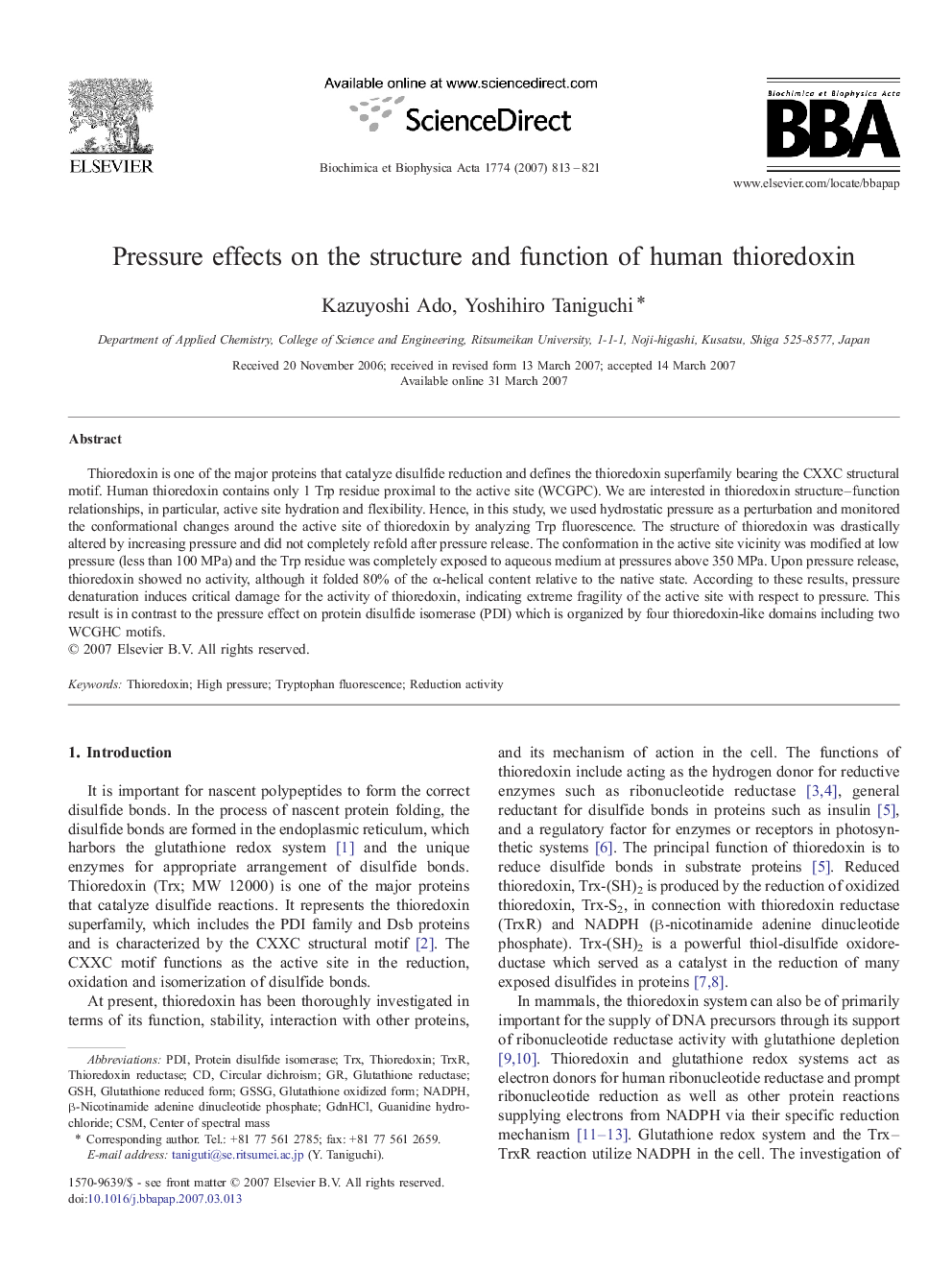| Article ID | Journal | Published Year | Pages | File Type |
|---|---|---|---|---|
| 1178373 | Biochimica et Biophysica Acta (BBA) - Proteins and Proteomics | 2007 | 9 Pages |
Thioredoxin is one of the major proteins that catalyze disulfide reduction and defines the thioredoxin superfamily bearing the CXXC structural motif. Human thioredoxin contains only 1 Trp residue proximal to the active site (WCGPC). We are interested in thioredoxin structure–function relationships, in particular, active site hydration and flexibility. Hence, in this study, we used hydrostatic pressure as a perturbation and monitored the conformational changes around the active site of thioredoxin by analyzing Trp fluorescence. The structure of thioredoxin was drastically altered by increasing pressure and did not completely refold after pressure release. The conformation in the active site vicinity was modified at low pressure (less than 100 MPa) and the Trp residue was completely exposed to aqueous medium at pressures above 350 MPa. Upon pressure release, thioredoxin showed no activity, although it folded 80% of the α-helical content relative to the native state. According to these results, pressure denaturation induces critical damage for the activity of thioredoxin, indicating extreme fragility of the active site with respect to pressure. This result is in contrast to the pressure effect on protein disulfide isomerase (PDI) which is organized by four thioredoxin-like domains including two WCGHC motifs.
